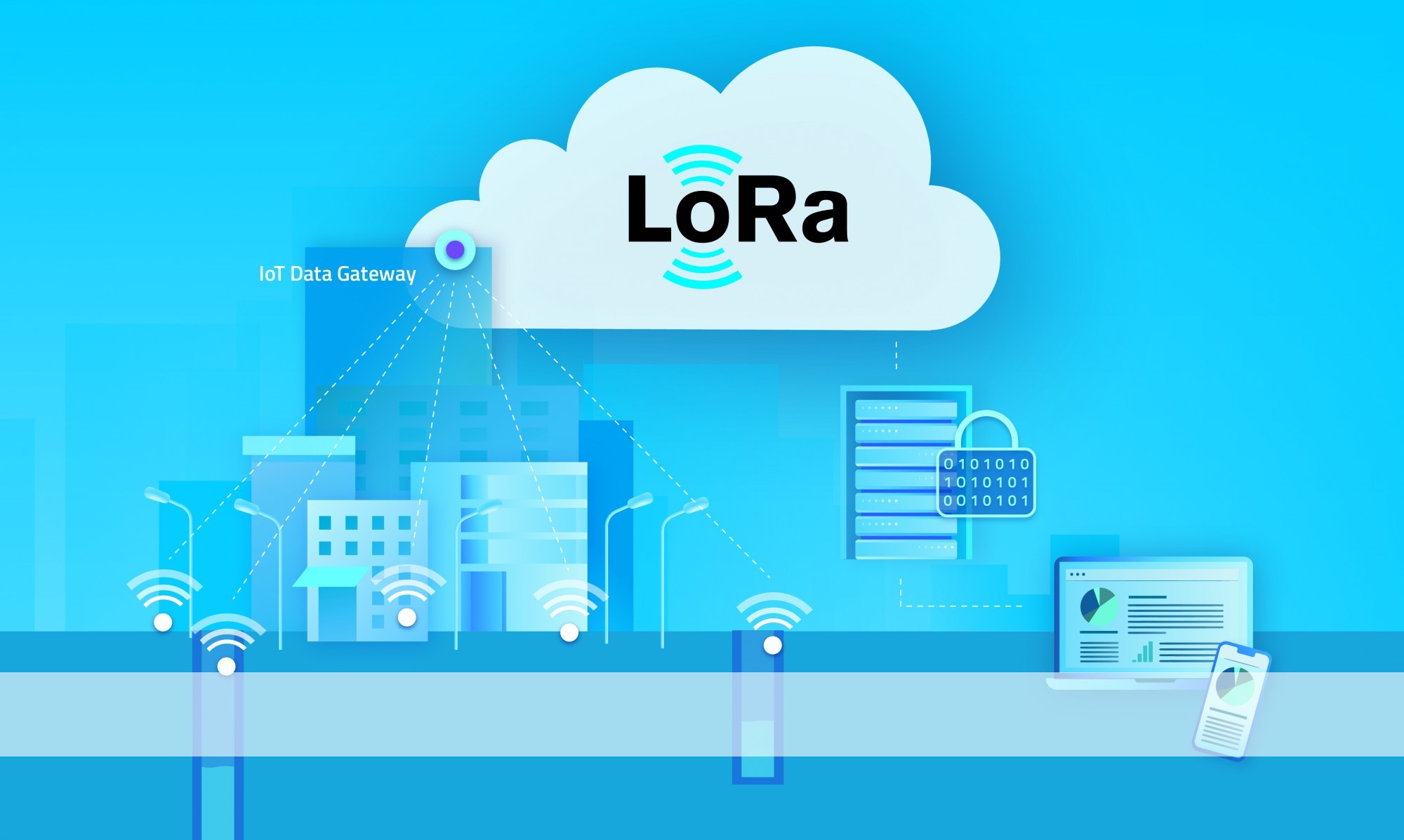LoRaWAN is a form of communication of end devices in the field with a telemetry server. It is reflected in the communication between devices and base stations connected to the server via broadband radio. The main feature of devices with LoRaWAN is the communication without interference in the form of physical obstacles, so that the devices can communicate even though they are underground or obscured by buildings and other types of obstacles.
The system is designed to operate at a wavelength that is different from all commercial communications devices (mobile telephony, wireless internet, FM radio, AM radio, special channels for the military and police, etc.), enabling high-speed successful readout (> 98%). It is designed to meet all defined IoT (Internet of Things) requirements.
A feature of a LoRaWAN communication device is the low battery consumption, depending on the communication class between the device and the server (base station). Depending on the need, there are three classes of end devices: Class A, B or C.
Class A - Lowest power, two-way end devices:
Class A communication is always driven by the end device and is fully asynchronous, which is the default class that all LoRaWAN end devices must support. Any uplink link transfer can be sent at any time and is accompanied by two short downlink links, providing two-way communication or network control commands, if needed. This type of protocol is called ALOHA.
The end device can enter low power sleep for as long as defined by its own setting - there are no network requirements for periodic wake-ups. This is why Class A is the lowest power mode, while allowing uplink communication at any time. Because downlink communication must always accompany the uplink connection transfer with the scheduler defined by the end device application, downlink connection communication must be buffered on the network server until the next uplink event. This allows you to change the configuration parameters in the device itself in the field, as well as synchronize the clock in the device at each reading.
With all of the above, devices have many benefits of using LoRaWAN technology:
- Longer battery life - up to three gas meter calibration cycles (15 years)
- Low cost of exploitation - fee when using radio technology significantly reduced compared to SIM cards in devices
- Ability to control telecommunications and view communication logs from the field device to the software application on end-user premise
- Ability to integrate a large number of devices for various purposes on the same server infrastructure (reading gas, water, electricity, parking, street lighting, etc.)
- Security key for each device individually - superior data encryption (128bit)
- The possibility of implementing a complete system in one country - data does not go beyond the borders of the state
The telemetry system offered by “Konvex - gasna I vodo tehnologija” uses:
1. LORAWAN Class A devices from the renowned IoT device manufacturer - AIUT APULSE X3F5
2. Base stations connected to server infrastructure via Ethernet or GPRS communication
3. Server infrastructure including all necessary licensed software and hardware
